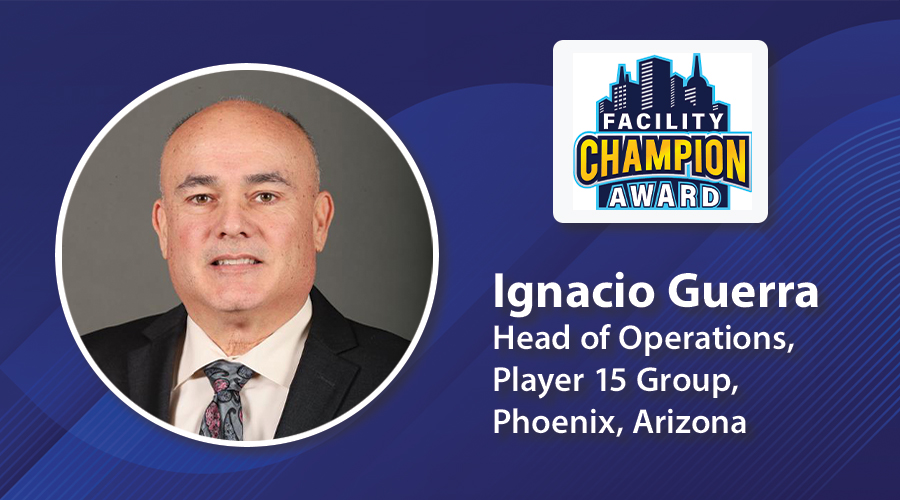Utility Vehicles: A New Generation
Arizona State University seeks enhanced performance and environmental friendliness in specifying versatile vehicles
In the last decade, many facilities’ grounds departments have put utility vehicles to the test. They’ve taken advantage of the vehicles versatility and then some.
But as their popularity has grown, so have the demands placed on them, and not all of the demands relate directly to traditional tasks such as mowing, spraying and hauling. Increasingly, managers are demanding that utility vehicles — as well as all other large and small pieces of grounds care equipment — have a smaller impact on the environment.
At Arizona State University, the challenges facing the grounds services are familiar to managers in some parts of the country. Soon, though, they are likely to be familiar to all managers.
Grounds Workhorses
The grounds services department offers a revealing example of how much workers have come to rely on utility vehicles and what the next generation of vehicles might look like.
“Utility vehicles are their driving tool boxes,” says Ellen Newell, the department’s assistant director. Newell is referring to the workers who use the department’s 15 utility vehicles to haul tools, equipment, materials, and people around the campus, which has 646 total acres, 392 of which are landscaped.
Many new utility vehicles are designed to handle a range of attachments, making them even more flexible. Popular attachments include sprayers, spreaders, hydraulic dump beds, toolboxes, pressure washers, air compressors, groomers, topdressers, cabs with heaters, debris blowers, vertical lifts, hitches, and snow plows.
Among the department’s other large pieces of equipment are five mowers, a tractor, a power washer, a street sweeper and six pick-up trucks of varying sizes.
Workers put the utility vehicles through heavy use in performing an array of tasks. Among the uses at Arizona State that demonstrate the vehicle’s appeal is chemical spraying.
“We’re a very urban campus, so we don’t have lot of room for big equipment,” she says. “The vehicles can fit between buildings so we can get into tight quarters and spray.”
By comparison, Newell says, in her previous job with the University of Utah, grounds workers were able to apply chemicals using pick-up trucks because that campus was more wide open and spaces between buildings were larger.
Making the Case
Specifying new equipment at Arizona State is a group effort, and utility vehicles are no exception. Workers asking for new vehicles are required to justify their requests to Newell.
“My group chooses the equipment they need, and everyone wants the latest, greatest and best,” she says. “But we can’t just go out and get whatever we want. As a group, we have to decide what we have to replace.”
The existing vehicles have lived up to the department’s performance expectations, Newell says. But the next generation of vehicles will have to deliver even more.
“We need them to be a little more heavy duty, carry a little more,” she says. The department also has built its own tool racks for the vehicles, and any new vehicles will have to be flexible enough to either carry all of the tools crews need or to allow easy attachment of the tool racks.
New vehicles also will have to have a larger bed, be easy to use and maintain, and deliver on manufacturer promises of reliability.
“Equipment that constantly goes down is a pain,” she says.
Even though the current vehicles have held up mechanically, Newell says the department will look at models from a range of manufacturers.
“We’re going to look at a wide range of products,” she says. “We’ll go and try them out. That’s very important to us.” Manufacturer demonstrations enable the workers to test out new models on the actual terrain they would be used on, as well as assess their comfort and ease of operation.
Because of the campus’s size, terrain and density, manufacturers seem to enjoy bringing utility vehicles to Arizona State.
“Manufacturers seem to think we can give their products a pretty good work out,” she says.
Spotlight: Sustainability
Facilities in general have paid more attention to the need for environmental friendliness in their operations in recent years, but the issue of sustainability — specifically, the vehicle’s power source — has become an even higher priority in Arizona.
The state’s governor recently signed an executive order banning gasoline-powered equipment.
The department has used electric vehicles for several years, Newell says, because of their environmental friendliness in terms of air pollution and noise levels. For new vehicles, the department will also look at any models that use solar power.
“Electric carts work well for us because we have nice, sunny weather all year round,” Newell says.
Makers of electric-powered utility vehicles have responded to customer demands for durability, speed and versatility. One manufacturer offers an electric vehicle that can travel up to 25 mph with a range of more than 40 miles. Its full-size deck provides more than 147 cubic feet of cargo space to carry up to 1,500 pounds, and it is specifically designed for off-road applications.
The manufacturer claims this vehicle can reduce operating and maintenance costs by more than 40 percent. Some models support a propane attachment so the vehicle can run on propane instead of gas or diesel fuel.
Newell also is looking for other types of grounds care equipment that use electricity, but the options are limited. Technology hasn’t advanced to the point where electric power for commercial-grade equipment would last long enough to be reliable, she says, and the same is true for many smaller pieces of grounds equipment.
“If you’re going to be using an electric string trimmer for eight hours, you can’t afford to be going through four or five batteries,” she says.
The next generation of utility vehicles will offer both new products and new features to meet customer demands, but managers still will face the biggest challenge of all — staying within budget.
Vehicles that seek to meet demands for environmental friendliness while sacrificing performance will do little to benefit managers, equipment users and organizations in the long run.
Specification: Key Questions
Selecting the most appropriate utility vehicle has become a more complex task in recent years as product offerings have expanded and manufacturers retool their vehicles to meet user needs. Among the most important questions to ask during the specification process are these:
• What should be the top speed of the vehicle?
• What is the experience level of the operators who will use this vehicle?
• Will this vehicle be used primarily to complete tasks, as a transport vehicle, or both?
• On what type of terrain will this vehicle be used — mud, sand, hills, etc.?
• Is ground or turf compaction an issue?
• What is the required maximum load capacity?
• Will the vehicle be used to pull implements? Are there any requirements for low torque?
— Dan Hounsell
|
Related Topics:







